As you know, the C major scale has 7 notes, which means that there are 7 chords in the key of C. Each chord roots on a note of the scale.
Popular chord progressions in the key of C
| Progression | Chords |
|---|---|
| I-IV-V | C-F-G |
| I-IV-I-V | C-F-C-G |
| I-V-vi-IV | C-G-Am-F |
| I-ii-IV-V | C-Dm-F-G |
| I-vi-ii-V | C-Am-Dm G |
| I-vi-IV-V | C-Am-F-G |
Why are these the chords in the key of C major? (the theory)
The chords in C will root on the notes along the C major scale, since all chords in a major key are formed by notes from their respective diatonic scale. Oh, if you're a beginner guitar player and lost track already, you'll want to get familiar with the major scale on guitar before continuing this lesson.
The C major scale has 7 notes, each with a corresponding scale degree:
Degree: 1 2 3 4 5 6 7 1(octave)
Note: C D E F G A B C
But how do we know which chord will be major or minor? Starting from a given root note, we need to form its triad in a way that leaves the chord constructed only from notes that can be found on the C major scale.
This means that starting from each root note, we’ll count out the 1st 3rd and 5th degrees along the major scale of that given root note. If any note is not on the C major scale, we’ll have to flatten it to make it a note that can be found on the C major scale. Confusing? Have no fear, we'll get to some examples shortly.
We’ll be differentiating 3 triads:
- Major triad (major chords) with scale degrees 1 3 5
- Minor triad (minor chords) with scale degrees 1 b3 5
- Diminished triads (diminished chords) with scale degrees 1 b3 b5
Now let’s calculate the quality of each chord in the key of C.
C major
Note: C D E F G A B C
Triad: 1 3 5
This gives us the notes C, E and G, which is the C major triad, therefore the first chord in the key of C is C major.D minor
Note: D E F# G A B C# D
Triad: 1 3 5
So our 3rd note for would be an F#, but we can’t have that, since that note is not in the key of C major (not on the C major scale). We have to lower the 3rd to the flattened 3rd.
Note: D E F G A B C# D
Triad: 1 b3 5
This gives us the notes D, F and A, which is the D minor triad. All of these notes are on the C major scale as well, therefore the second chord in the key of C is D minor.E minor
Note: E F# G# A B C# D# E
Triad: 1 3 5
So our 3rd note would be a G#, but we can’t have that, since that note is not in the key of C. We have to lower the 3rd to the flattened 3rd.
Note: E F# G A B C# D# E
Triad: 1 b3 5
This gives us the notes E, G and B, which is the E minor triad, therefore the third chord in the key of C is E minor.F major
Note: F G A Bb C D E F
Triad: 1 3 5
This time we’re in luck, the 1st, 3rd and 5th of the F major scale are in the key of C, so we don’t need to modify any of the notes. We get the notes F, A and C, which is the F major triad, therefore the fourth chord in the key of C is F major.G major
Note: G A B C D E F# G
Triad: 1 3 5
Again, the 1st, 3rd and 5th of the G major scale are in the key of C, so we don’t need to modify any of the notes. We get the notes G, B and D, which is the G major triad, therefore the fifth chord in the key of C is G major.A minor
Note: A B C# D E F# G# A
Triad: 1 3 5
Again, we need to modify our 3rd note, which would be a C#, since that note is not in the key of C. We have to lower the 3rd to the flattened 3rd.
Note: A B C D E F# G# A
Triad: 1 b3 5
This gives us the notes A, C and E, which is the A minor triad, therefore the sixth chord in the key of C is A minor.B diminished
Note: B C# D# E F# G# A# B
Triad: 1 3 5
Ohoh, now we need to flatten the 3rd AND the 5th, since neither the D# or the F# are on the C major scale.
Note: B C# D E F G# A# B
Triad: 1 b3 b5
This gives us the notes B, D and F, which is the B diminished triad, therefore the seventh chord in the key of C is B diminished.
And that's about it, you should now know the intricacies of chords in the key of C. The above is of course true not just for guitar chords, but chords in general.
Have a look at guitar chords in other keys as well.

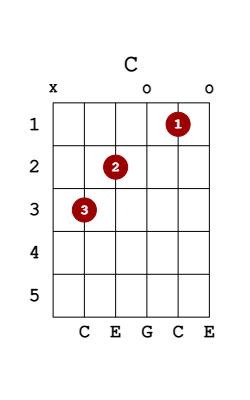
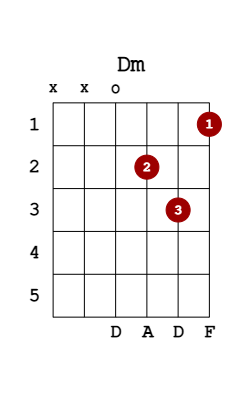
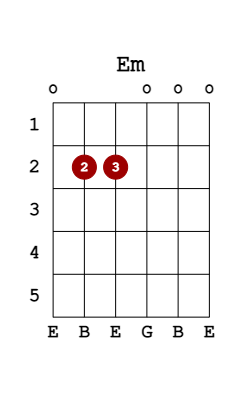
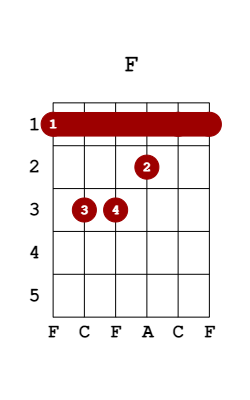
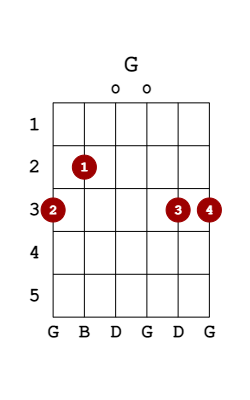
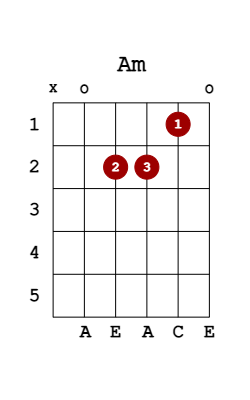
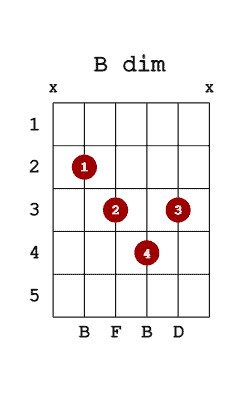
Are these for guitar or for casio as well
By casio you mean piano keyboard? Yes, these are music theory concepts, applicable to all instruments.
Bruh it’s theory it’s for all instruments
They are for any instrument that can play chords.
Been playing mandolin for fifteen years and never understood this how it’s explained here. Thank you!
Well done, Tom! First time I see something about chord theory so easy to understand. Crystal clear! Thanks for that.
In your chart at the top, the Bdim looks wrong. It says to play the G string on the first fret and play a G#. Shouldn’t it be played open? G# isn’t in the key of C.
You’re right Nelson, thanks for catching that one! I just corrected it.
Cool. Thanks!
Good explanation. I only know the 1-3-5 but not sure about why we are taking this. But, now I understand the logic behind this.
Ok, why go to all the trouble to list all the keys… C, D, E, F, G, A, B taking the first triad of each key, removing any sharps or flats, when all you need to do is just go to the C Major scale, take the note which is the chord name (1st), and then just take the 3rd, and 5th note after that?
C D E F G A B C D E F G A B C D
CEG, DFA, EGB, FAC, GBD, ACE, BDF and from the pattern we know maj min min maj maj min dim
C maj, Dmin, Emin, Fmaj,Gmaj, Amin, Bdim Chords in the key of C
Using the same logic for key of A Major
A B C# D E F# G# A B C# D E F# G# A B C# D
AC#E, BDF#, C#EG#, DF#A, EG#B, F#AC#, G#BD
Amaj, Bmin, C#min, Dmaj, Emaj, F#min, G#dim Chords in the key of A
What am I missing? I write down the key, keep taking triads until you get all seven of the chords. Instead of having to write down seven keys and then removing sharps or flats from the first triad of each key, just to get back to the same notes in the same order that I can get from the original key I’m interested in.
Thanks
Hi Ves,
Yes, you wrote down exactly what we are doing with major scale chord progressions. The reason I went into detail is to fully show why you remove the sharp notes from minor chords.
Thanks. Understanding the why is very important. That’s the science of it.
Ves submission is an implemention of the why.